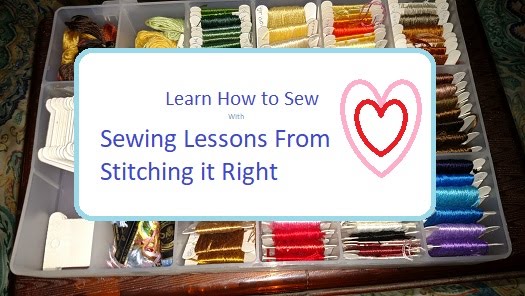(Sorry for using the feminine version of the word if you're a dude reading this.)
Seamstress
| Click here to buy this book! |
Dressmakers and tailors get to enjoy more creativity in their work, as well as a slightly higher average wage of $12.30 per hour.
Sewing Techniques
Most sewing techniques for sewing machine operators are learned on the job, and generally revolve around quickly placing the fabric in the sewing machine and pressing the pedal while manipulating the fabric.Dressmaking and tailoring, on the other hand, require measuring, fitting, cutting, sewing and altering garments or creative textile art pieces.
Sewing Ideas
In a similar vein, sewing machine operators generally work in factories where they are not asked to develop creativity or come up with ideas.Dressmakers and tailors are typically consulted for design and fitting suggestions at each step of the garment creation process.
Textiles
Both types of seamstress will focus on working with textiles. There are, however, many different types of textiles that range from very light knits, woven materials, natural fiber fabrics, and synthetics, to heavy versions of each of those types of sewing fabric.| Click here to buy this book! |
Sewing Machine Needle Chart
Sewing machine operators are generally provided with a single gauge needle to do the single function requested.A dressmaker or tailor, on the other hand, will, at least at first, need to consult a sewing machine needle chart to ensure using the right type of needle on the fabric being sewn.
My Thoughts on Being a Seamstress
I tried to write this without adding too much of my personal opinion, but you didn't click on this to get a dry rendition of what a seamstress does, right?
You are reading this to see what it's really like.
First, if you like sewing, it's a great job - but if hate sewing, you are not going to like it no matter what.
I have worked on production lines as a sewing machine operator, and I really liked it. I like the fast pace and being able to let my imagination run while my hands do the same thing over and over. It's kind of mindless, but I find that freeing because my mins can still work on what ever it wants.
I have also worked on the custom sewing end - and I love that, too. The challenge of measuring and designing and fitting are mentally stimulating - and seeing the finished items can be very rewarding emotionally.
The two types of sewing are almost polar opposites - with the common thread (no pun intended) being the use of textiles and the sewing tools used.
In my opinion, both are enjoyable and worthwhile, even though I have had jobs that paid more, few have been as rewarding overall, or provided as good a quality of life.
